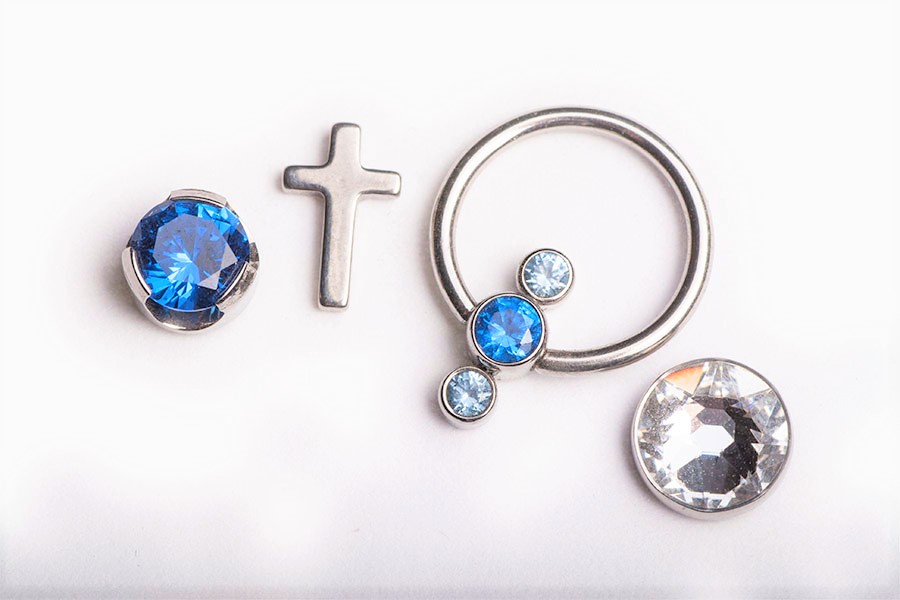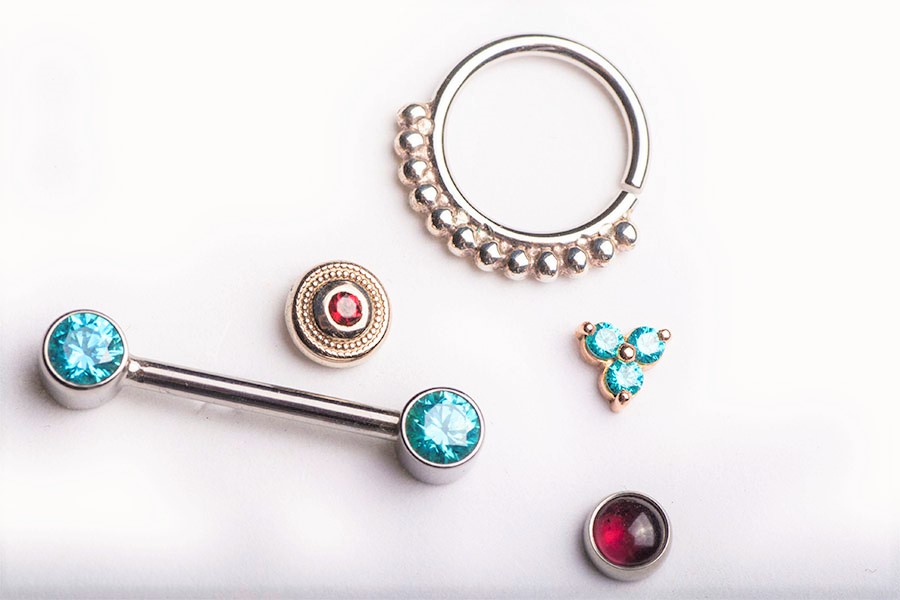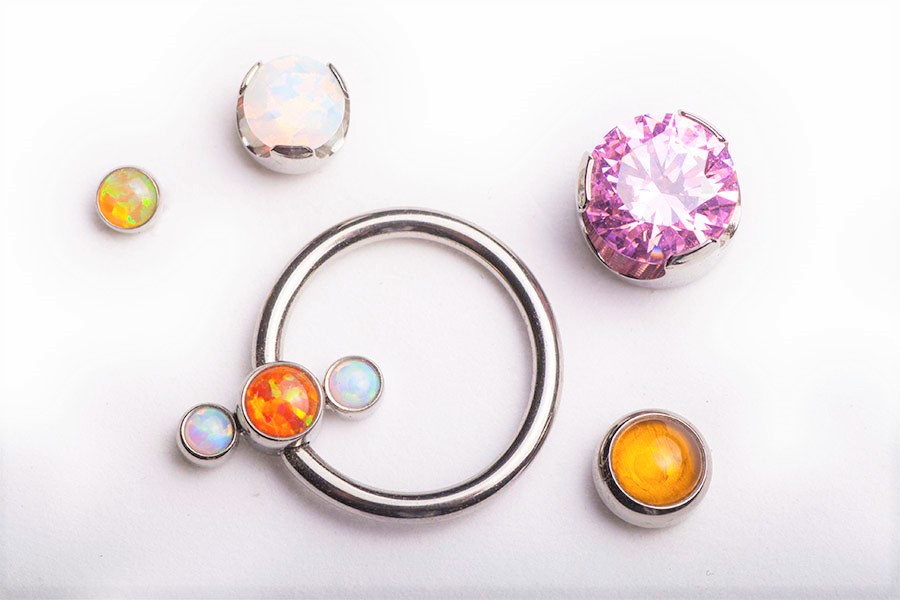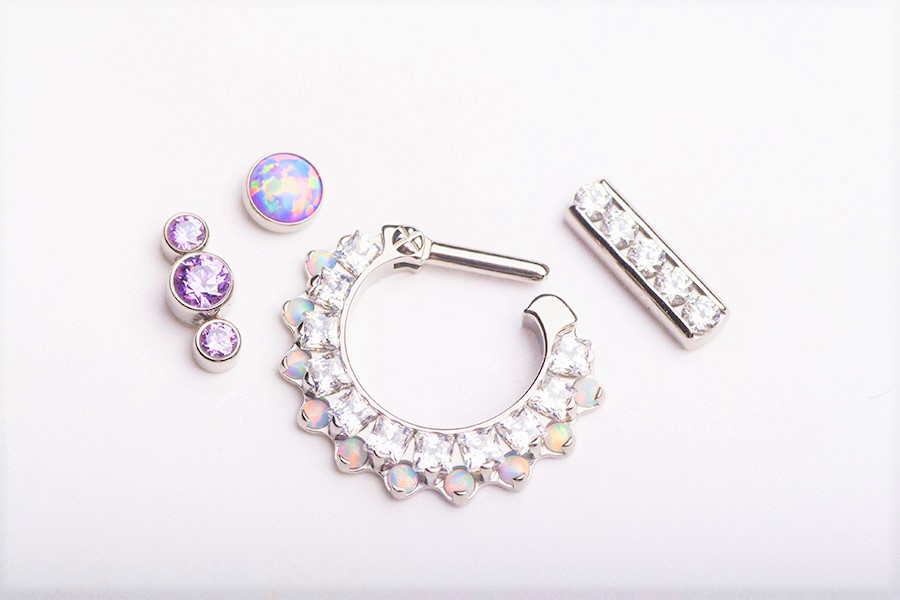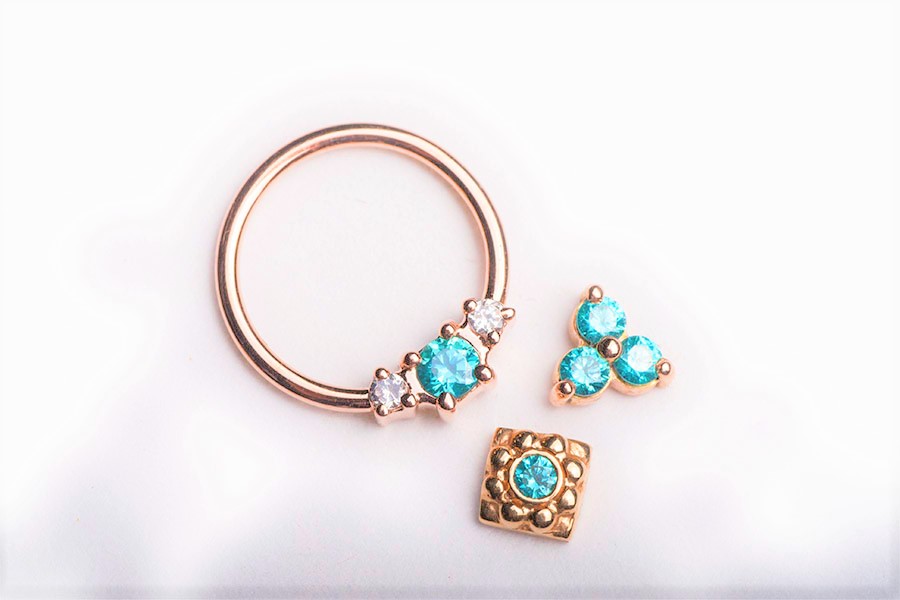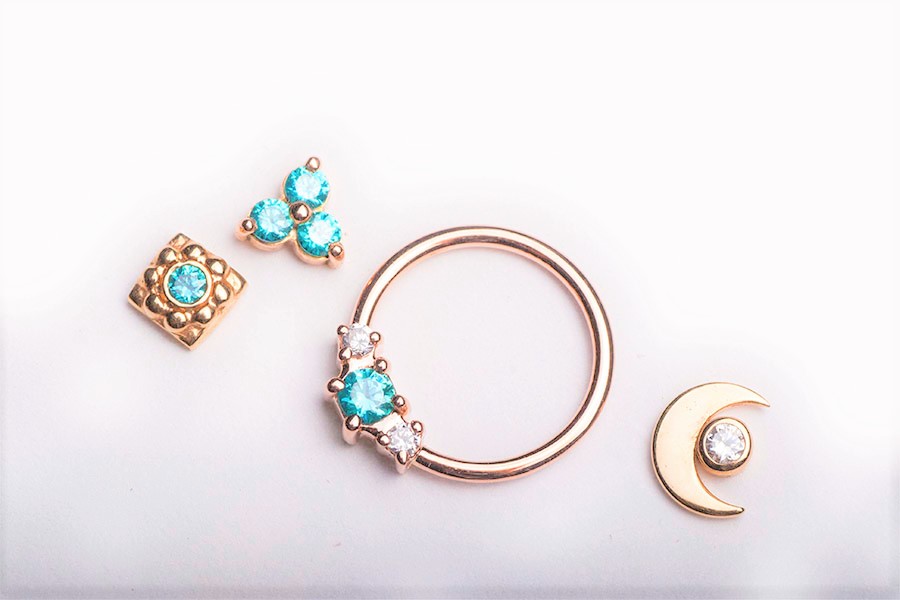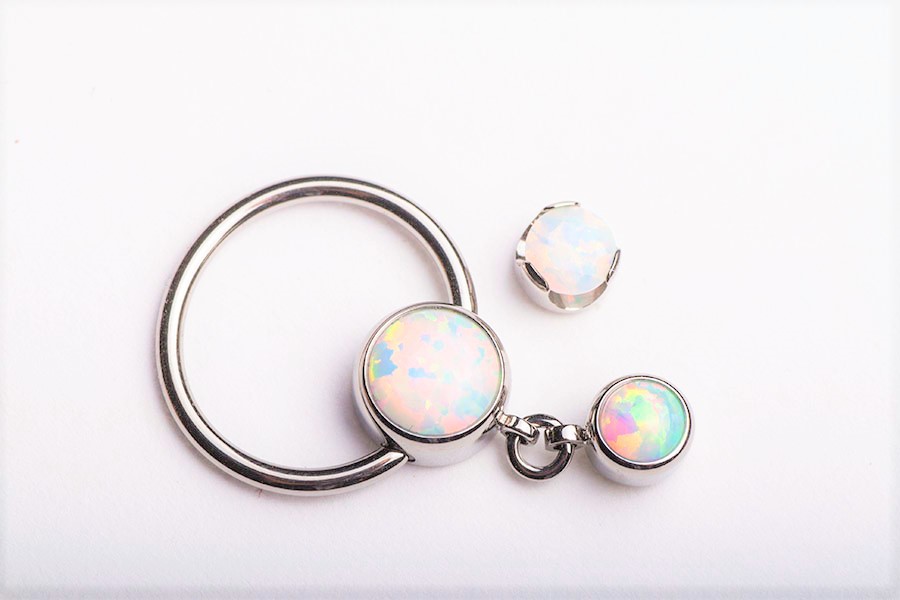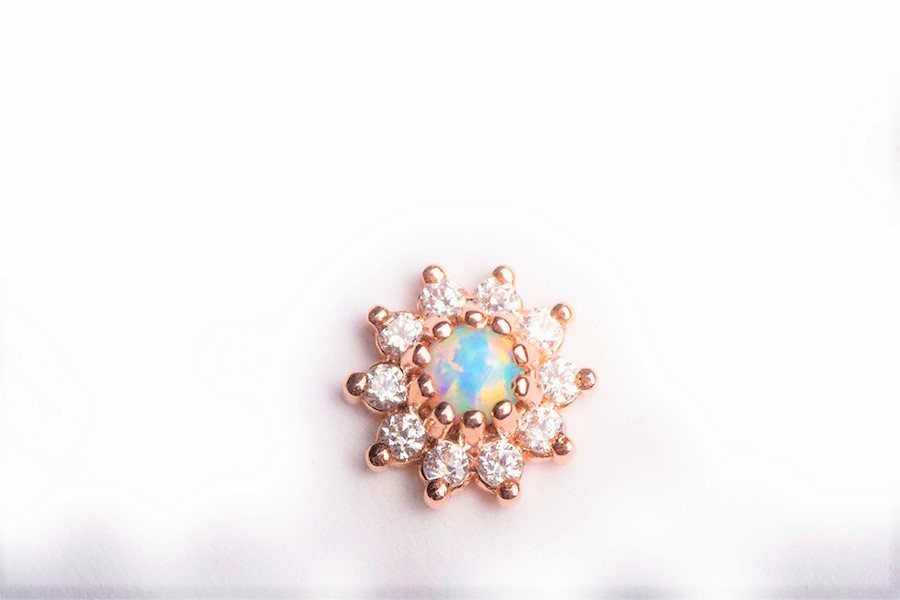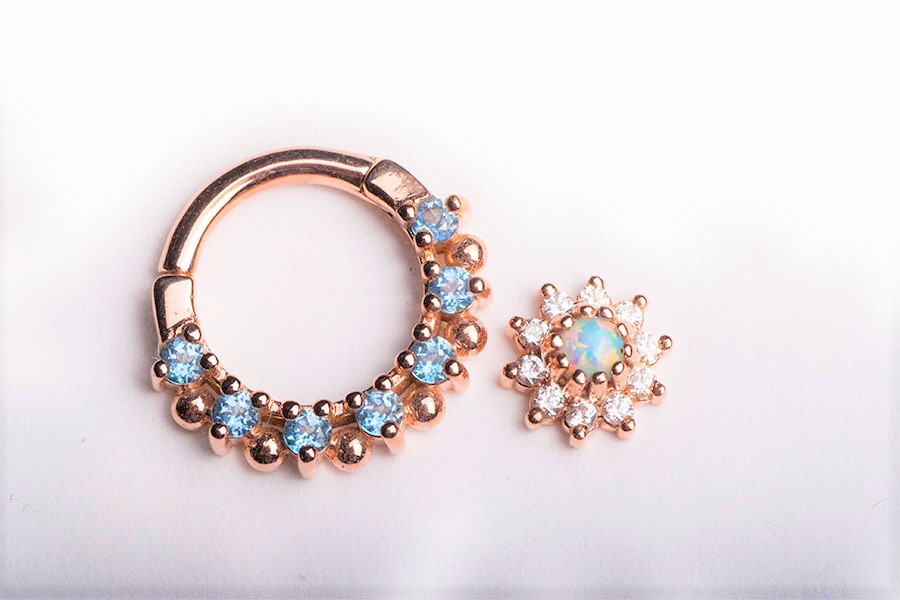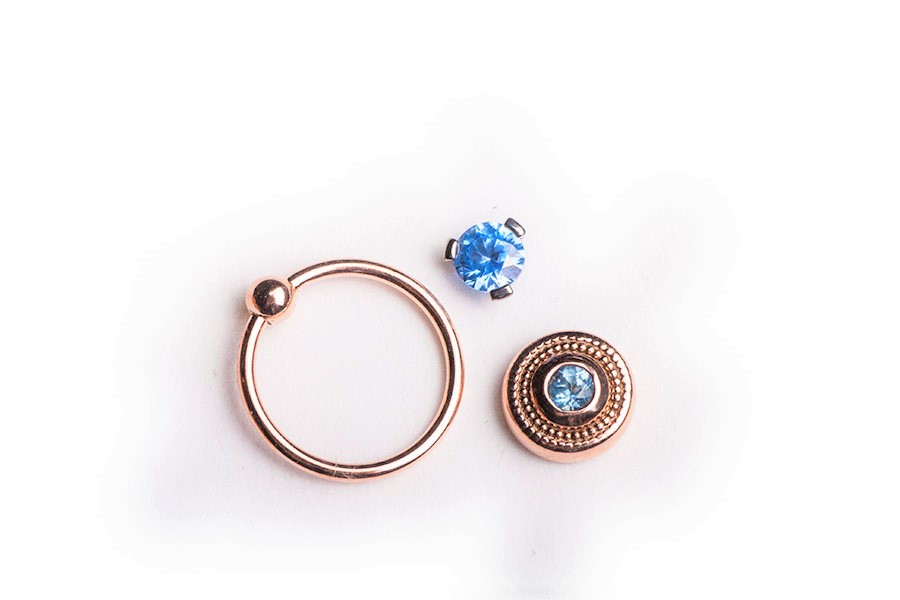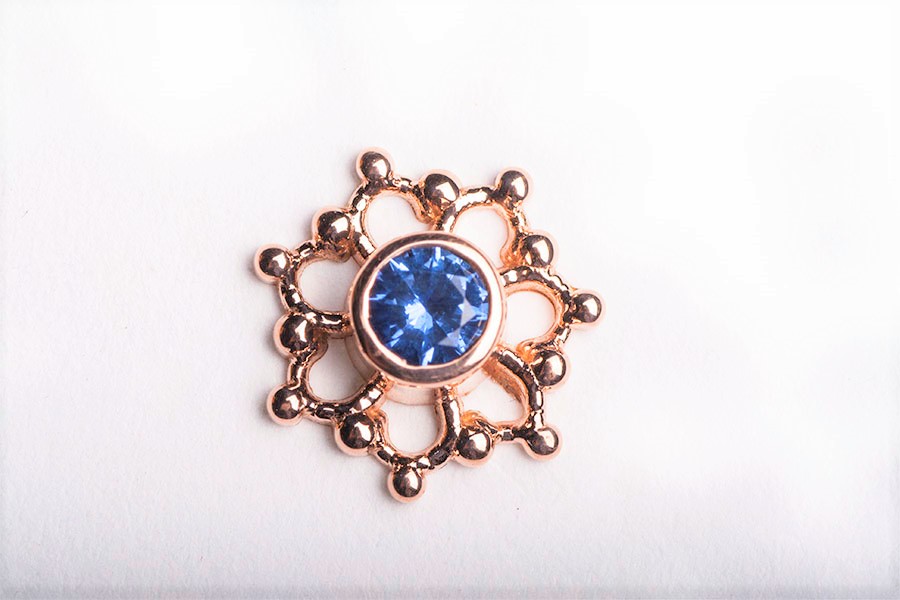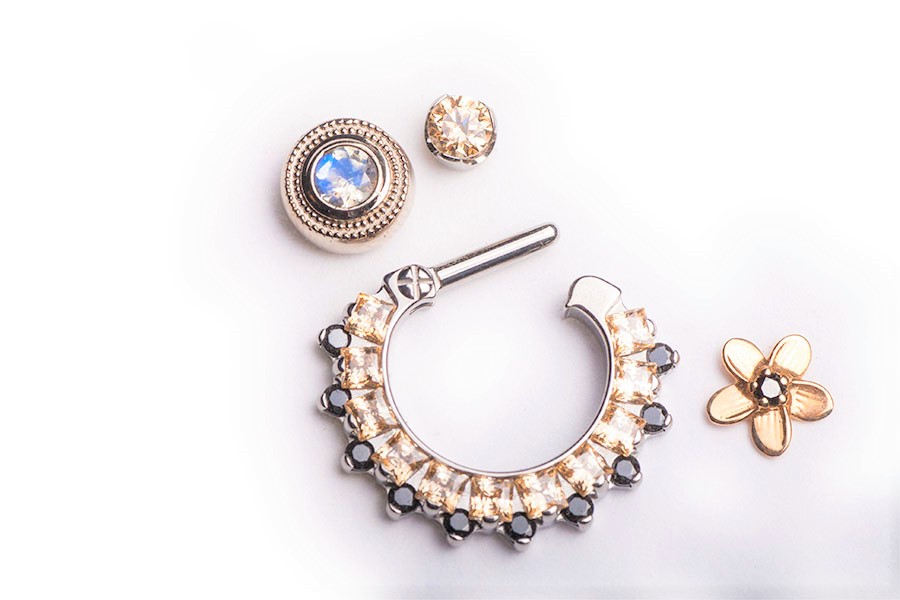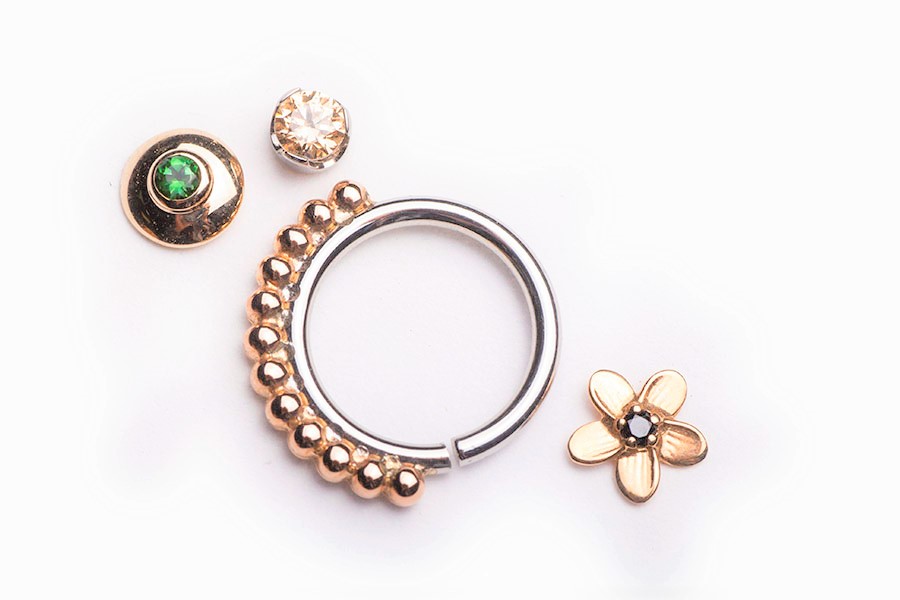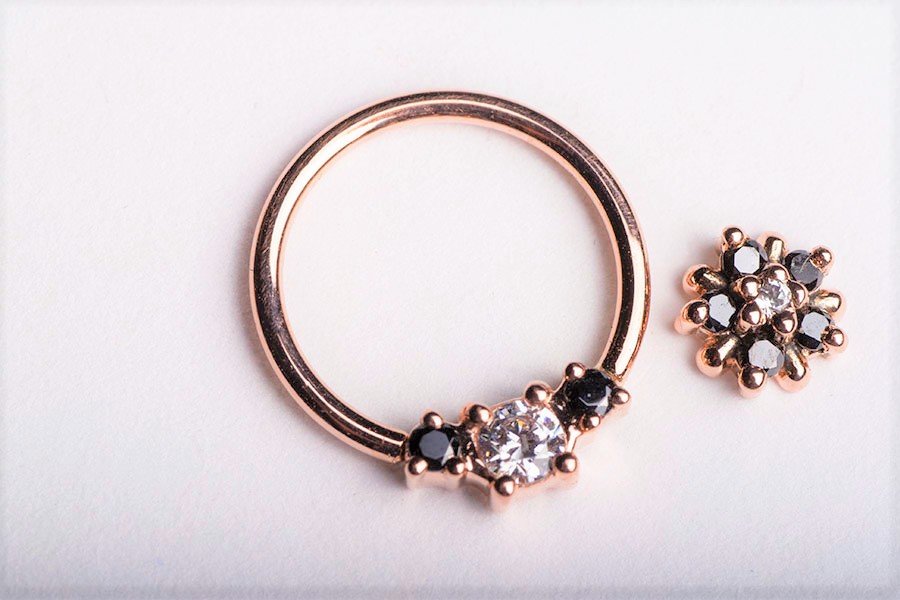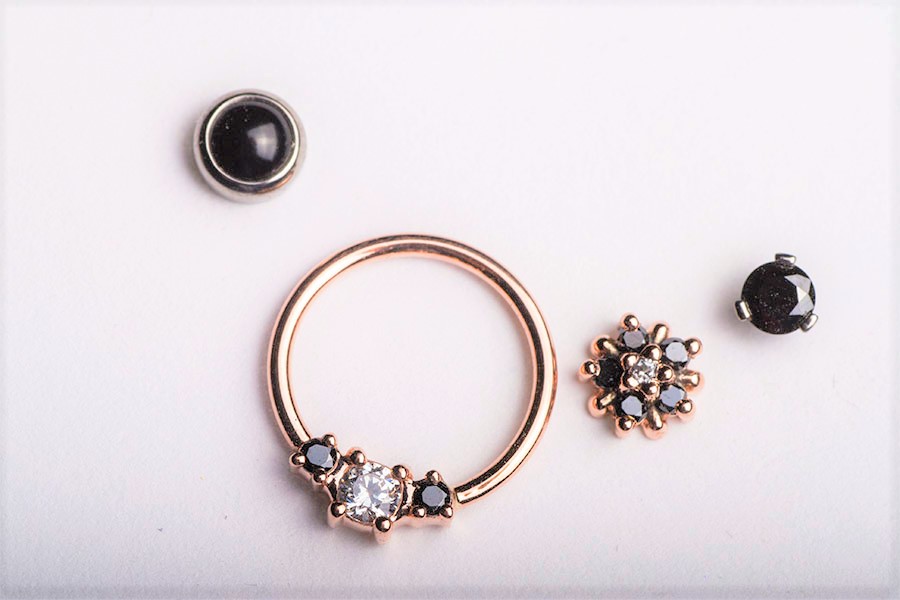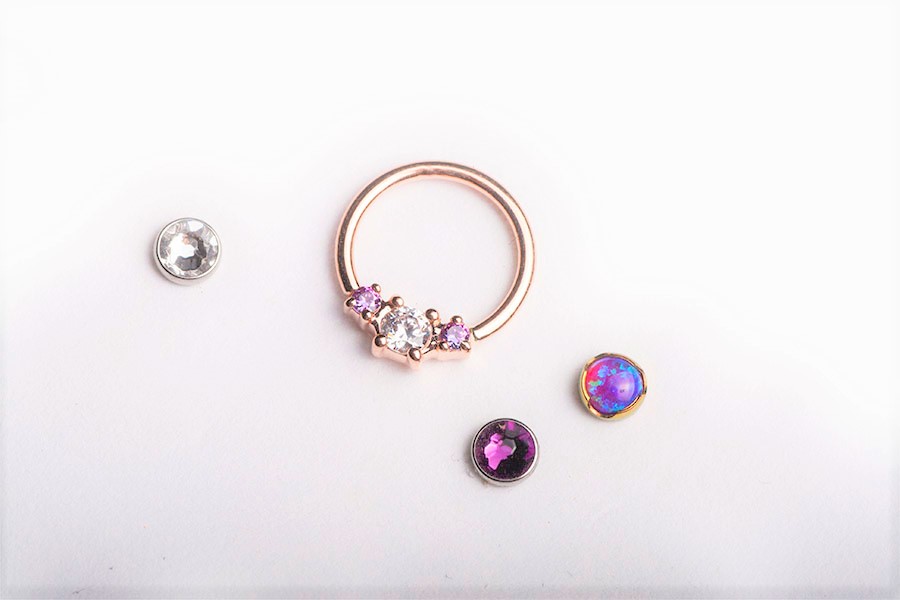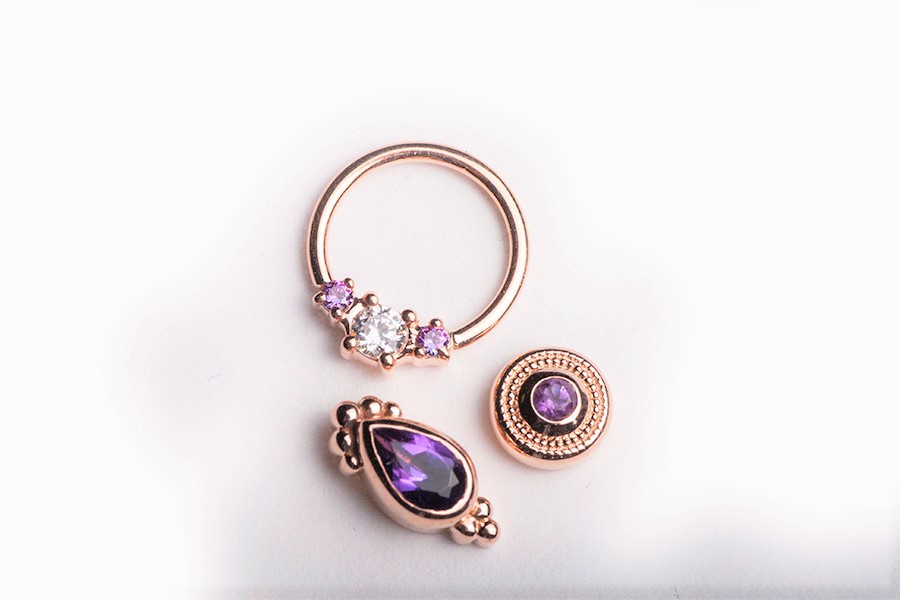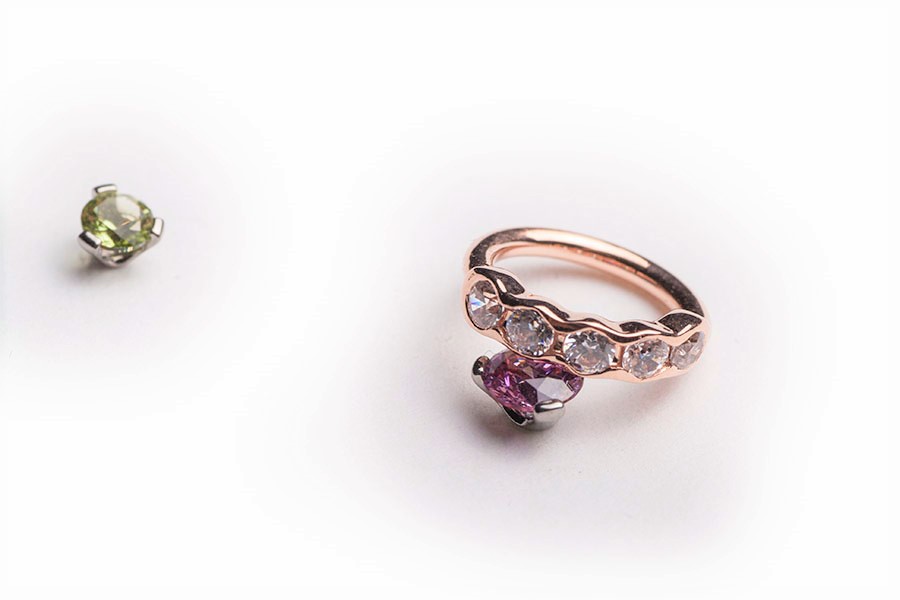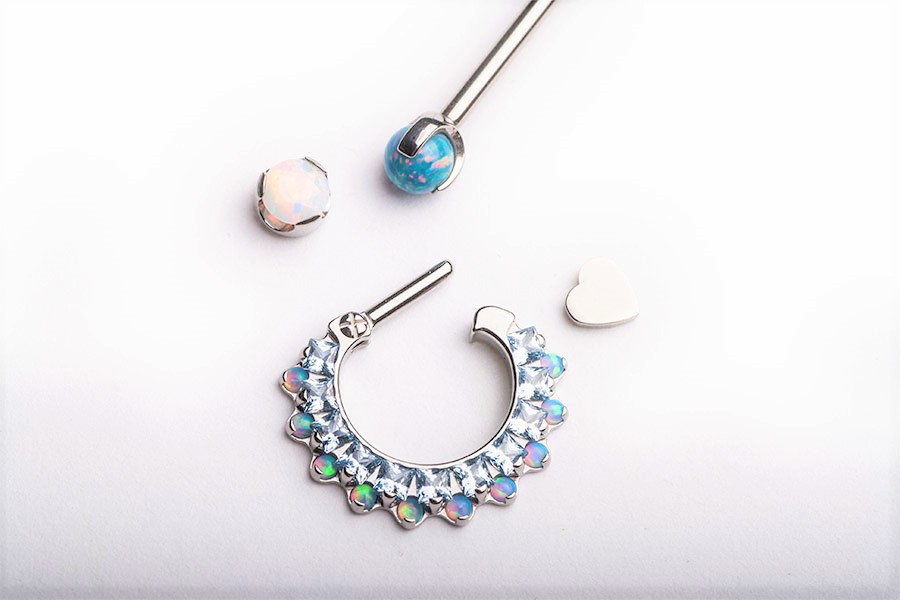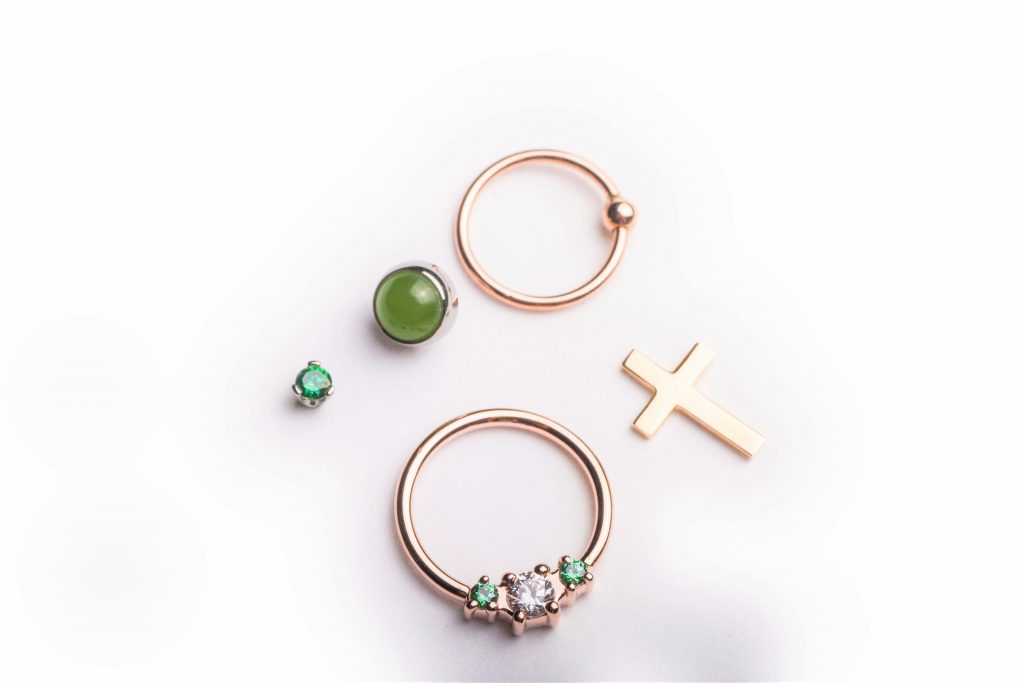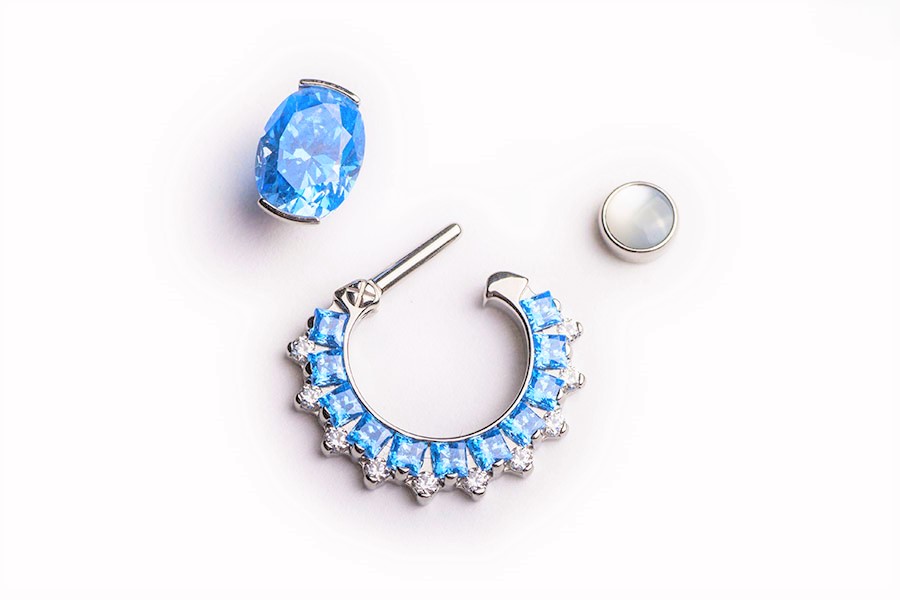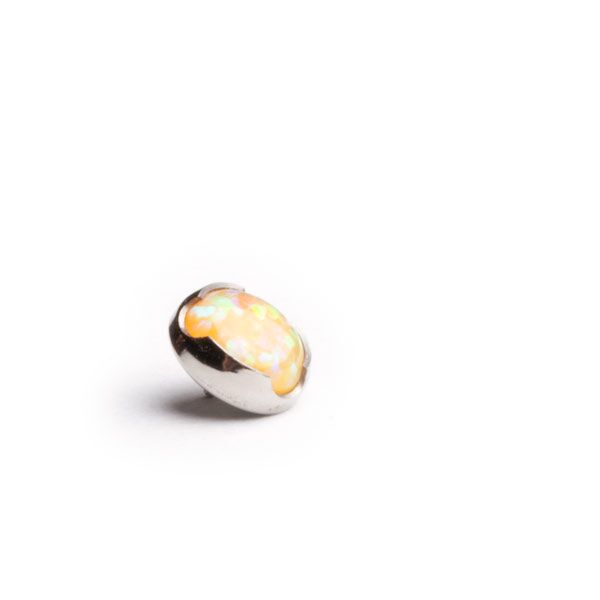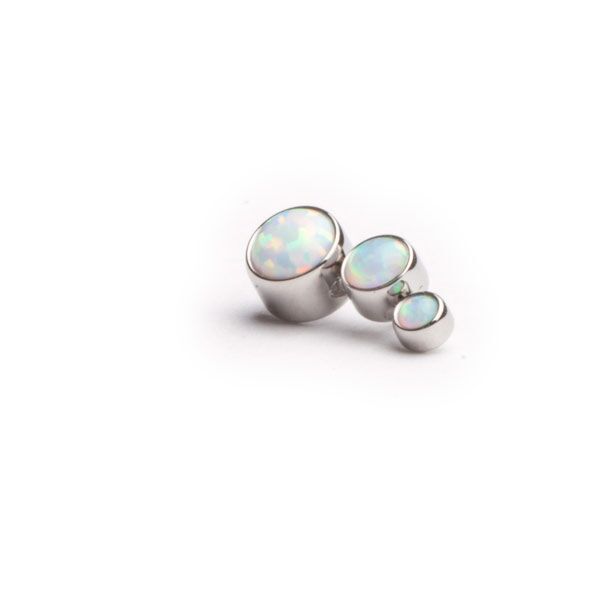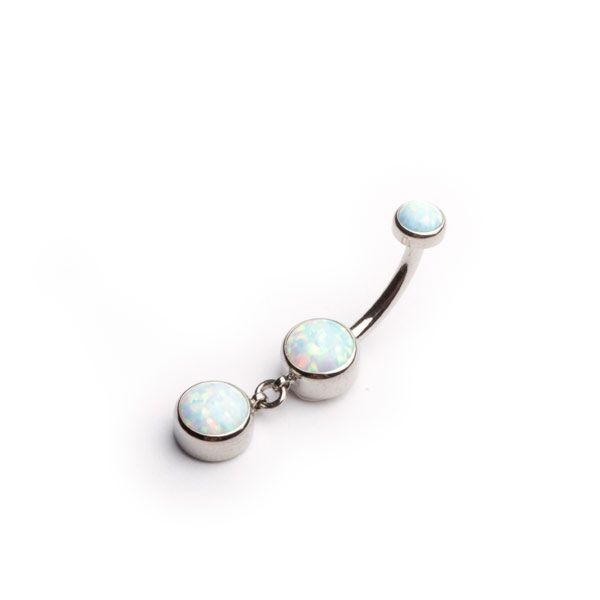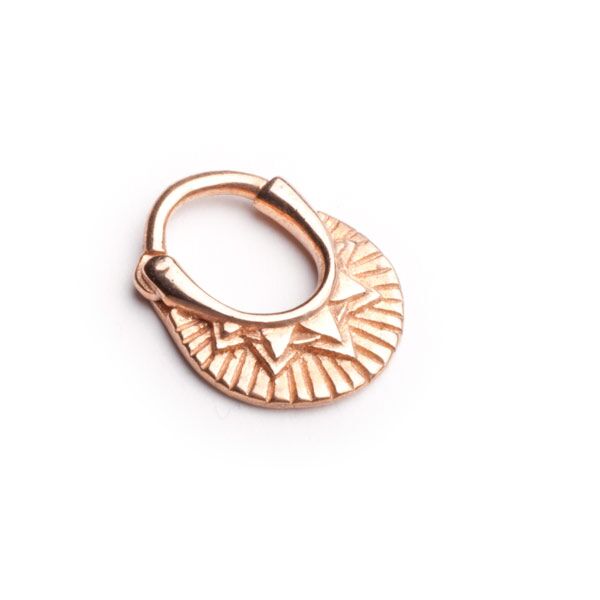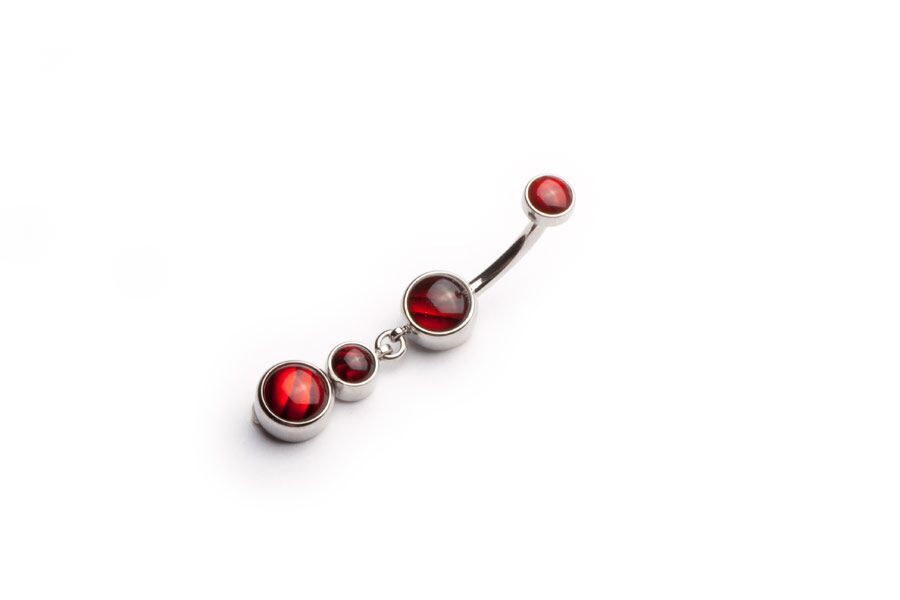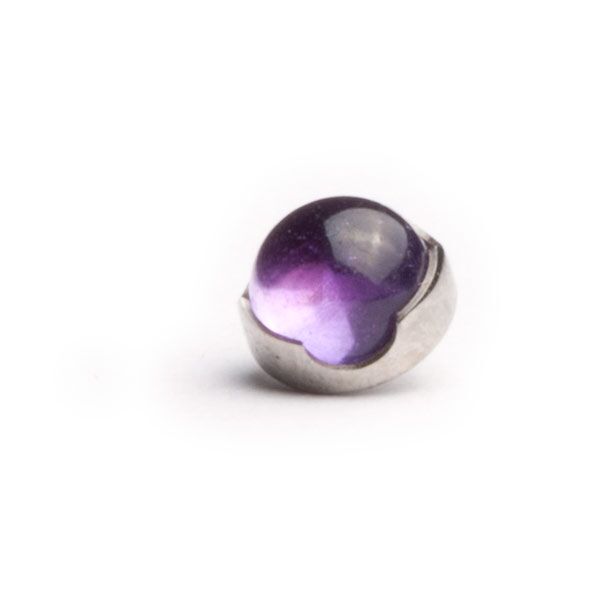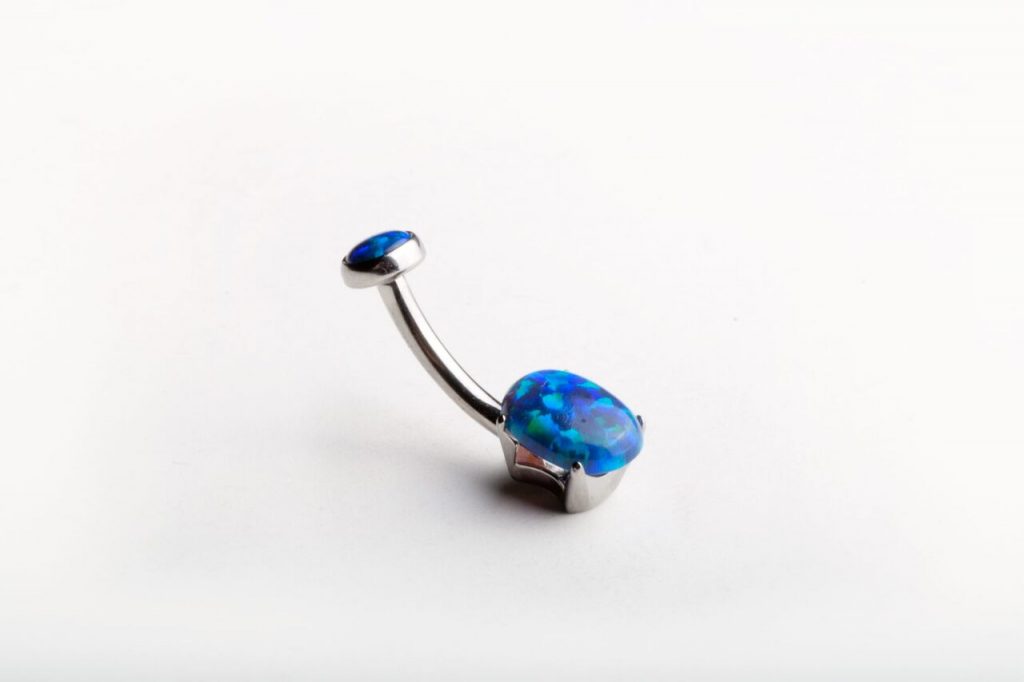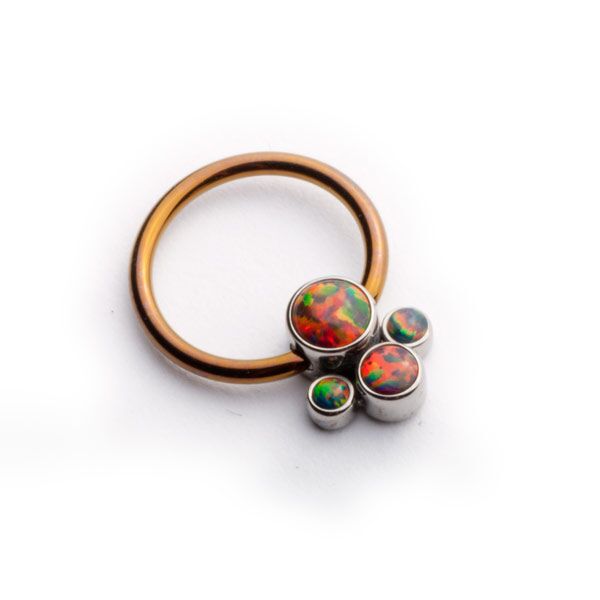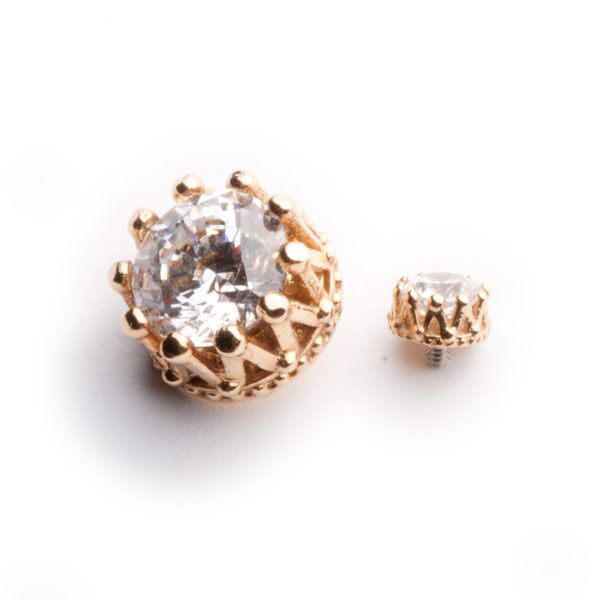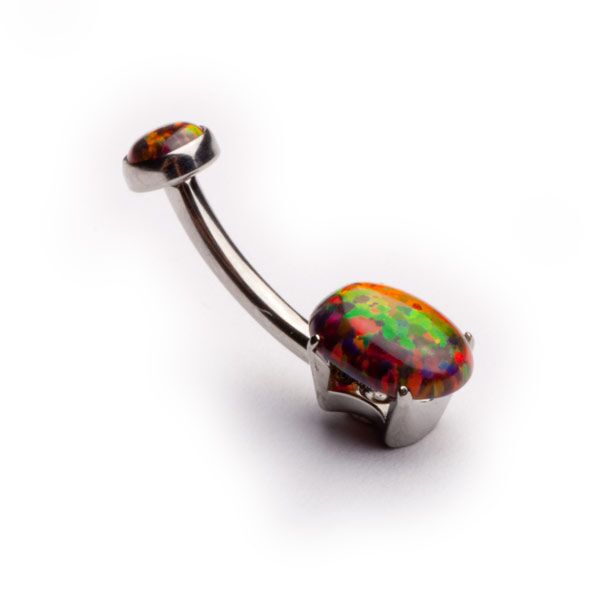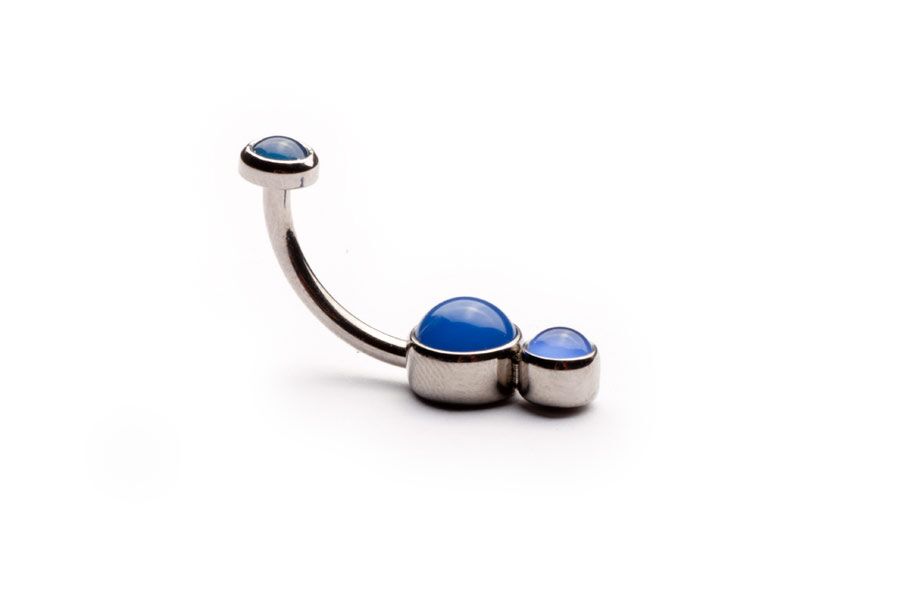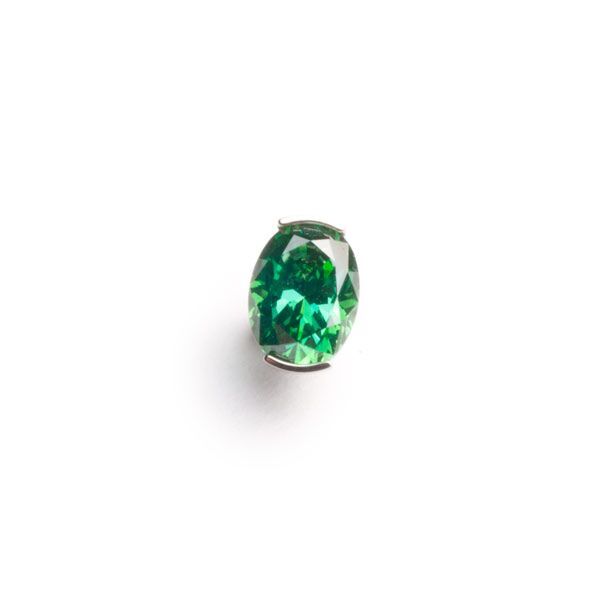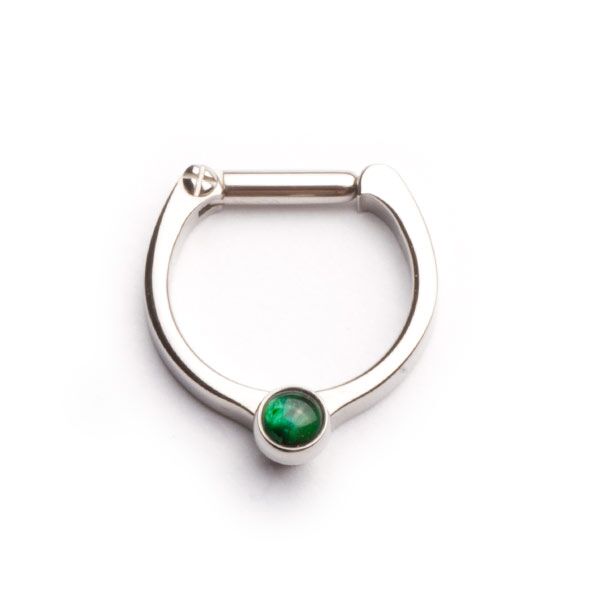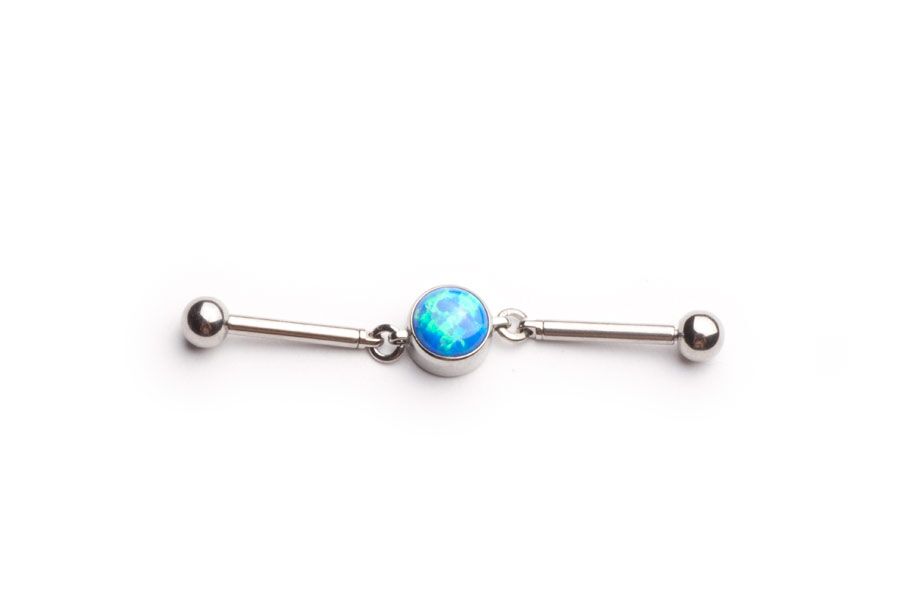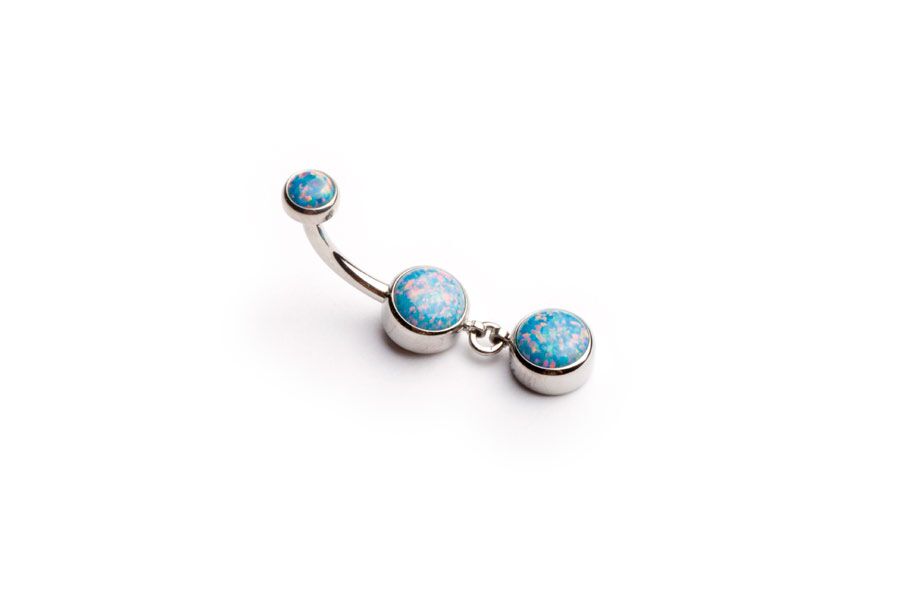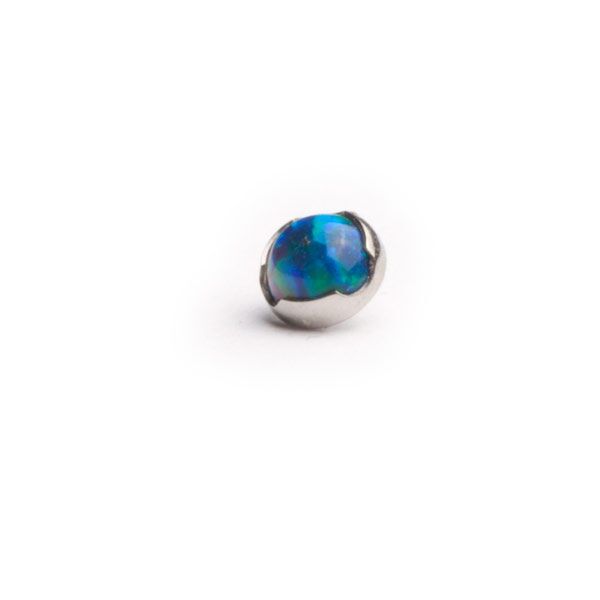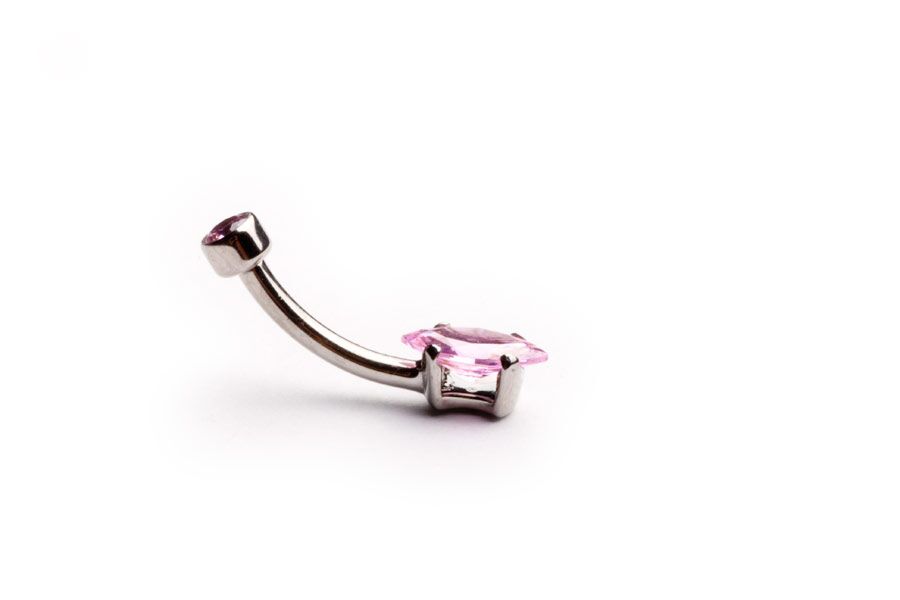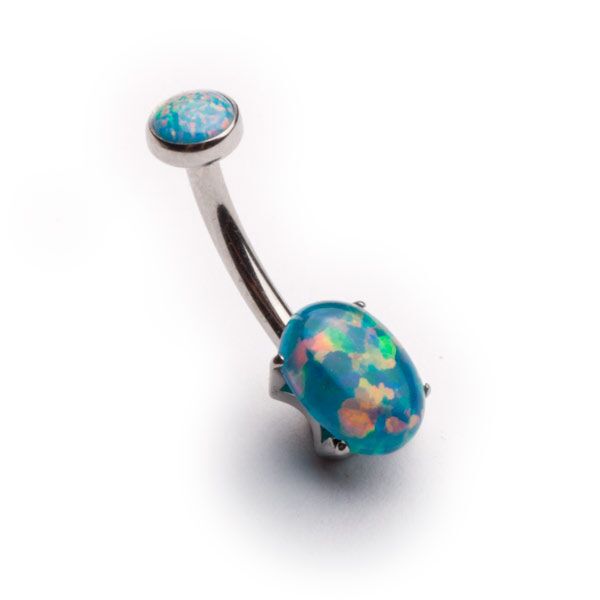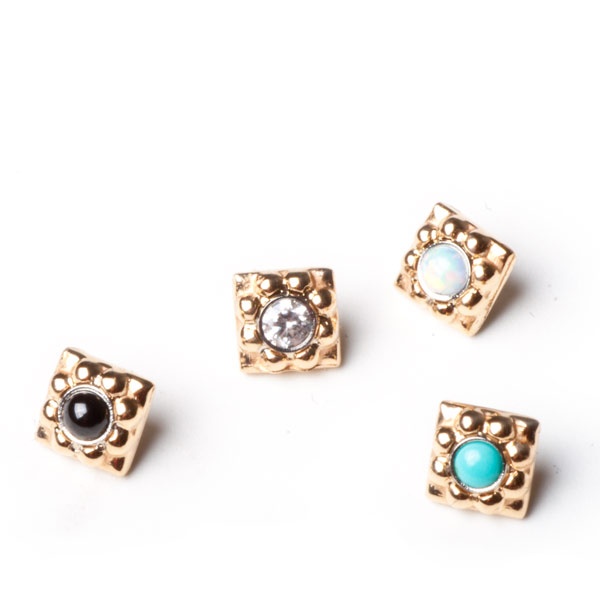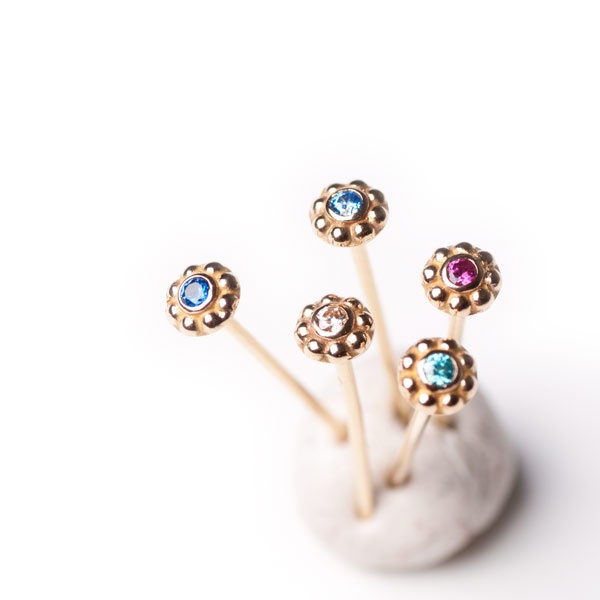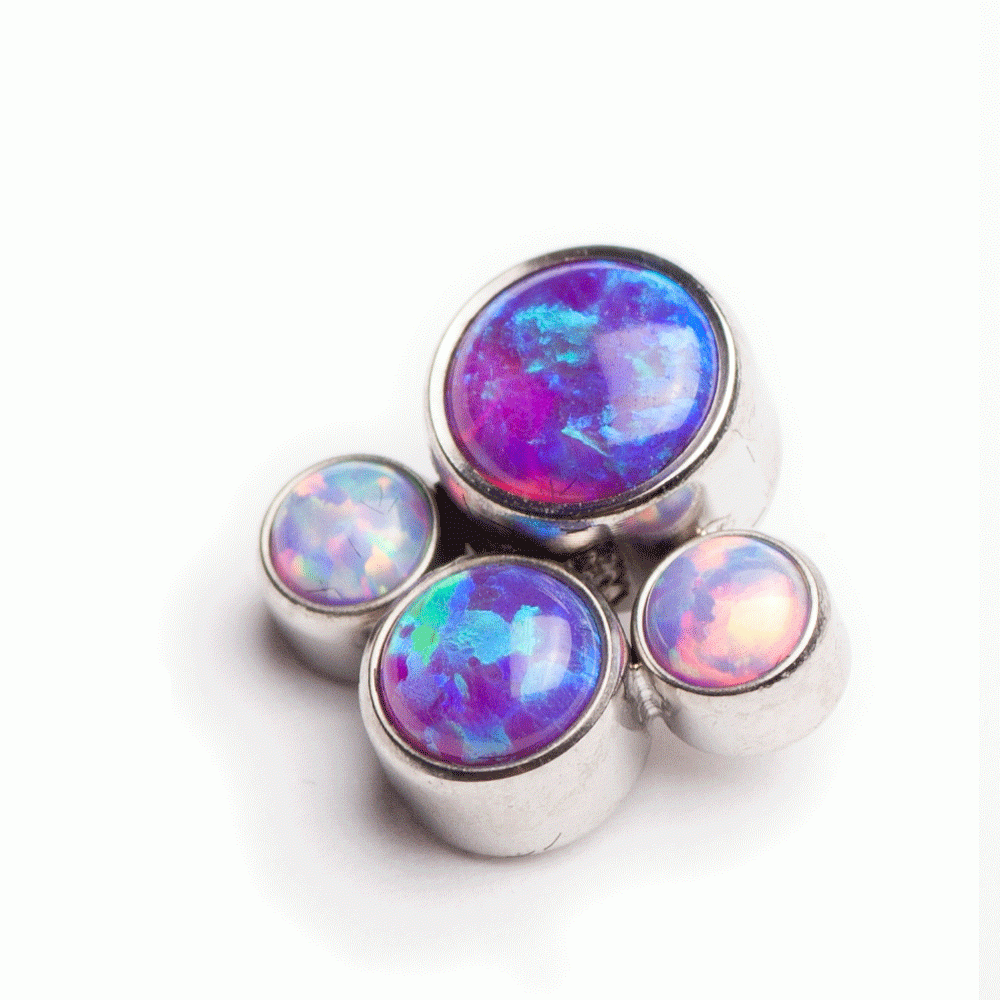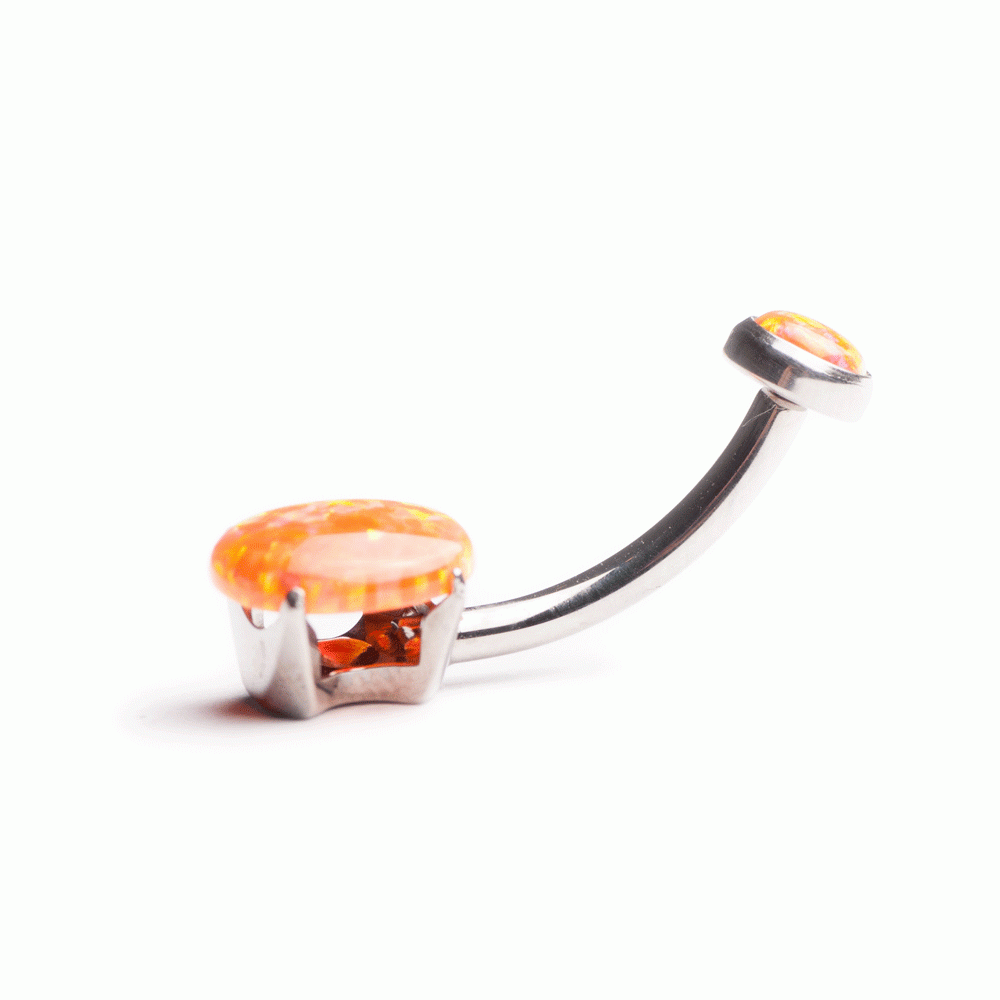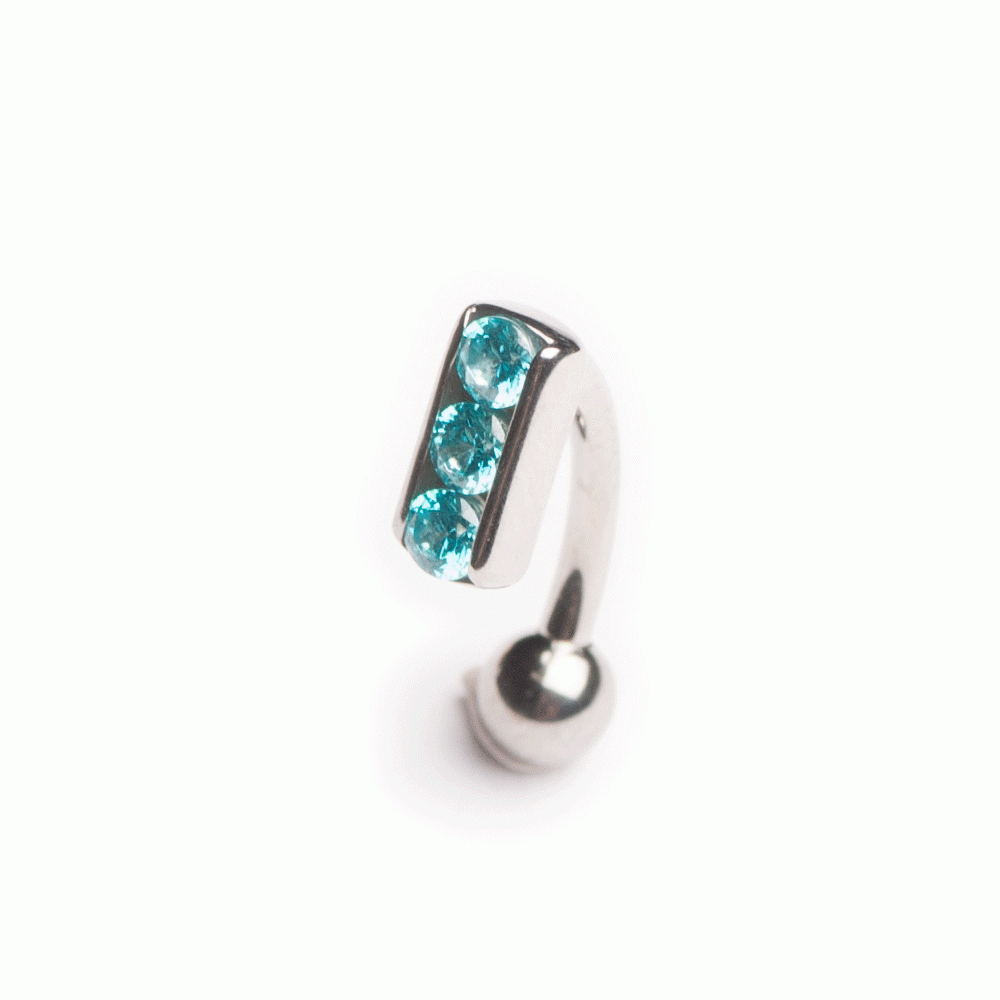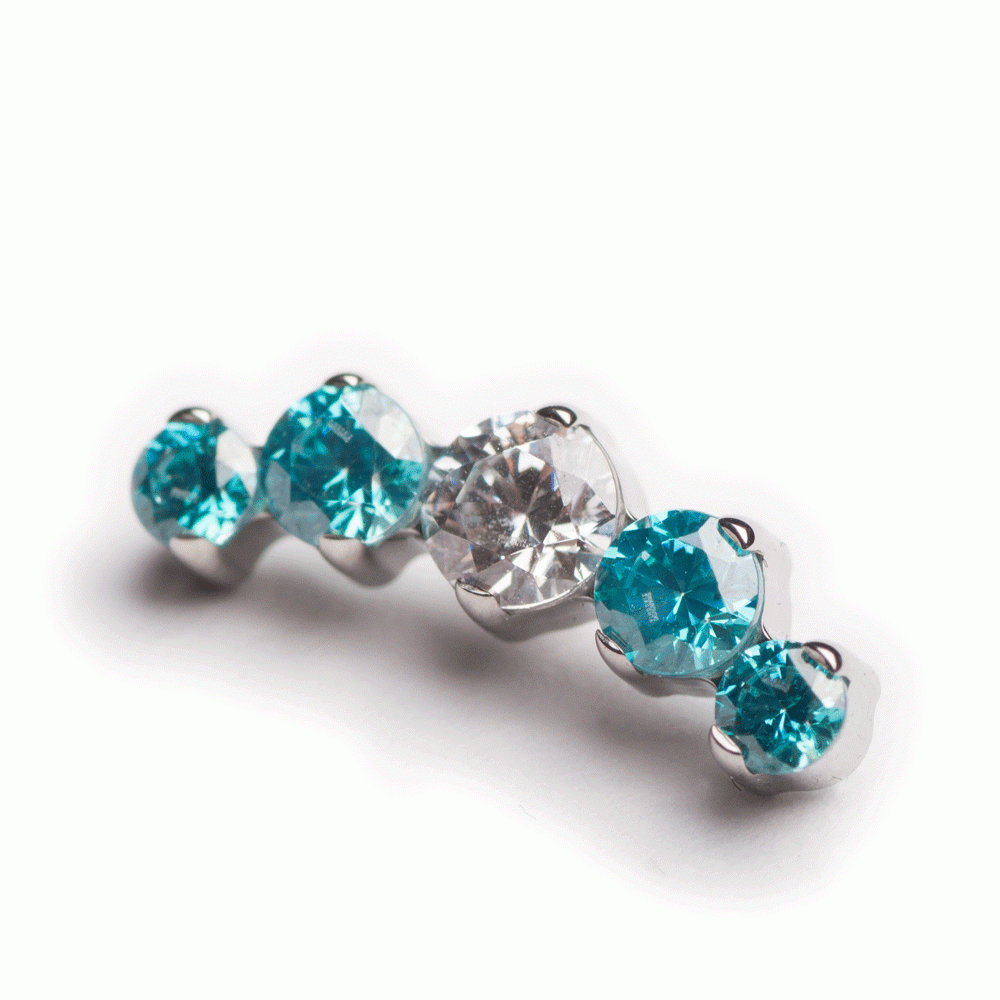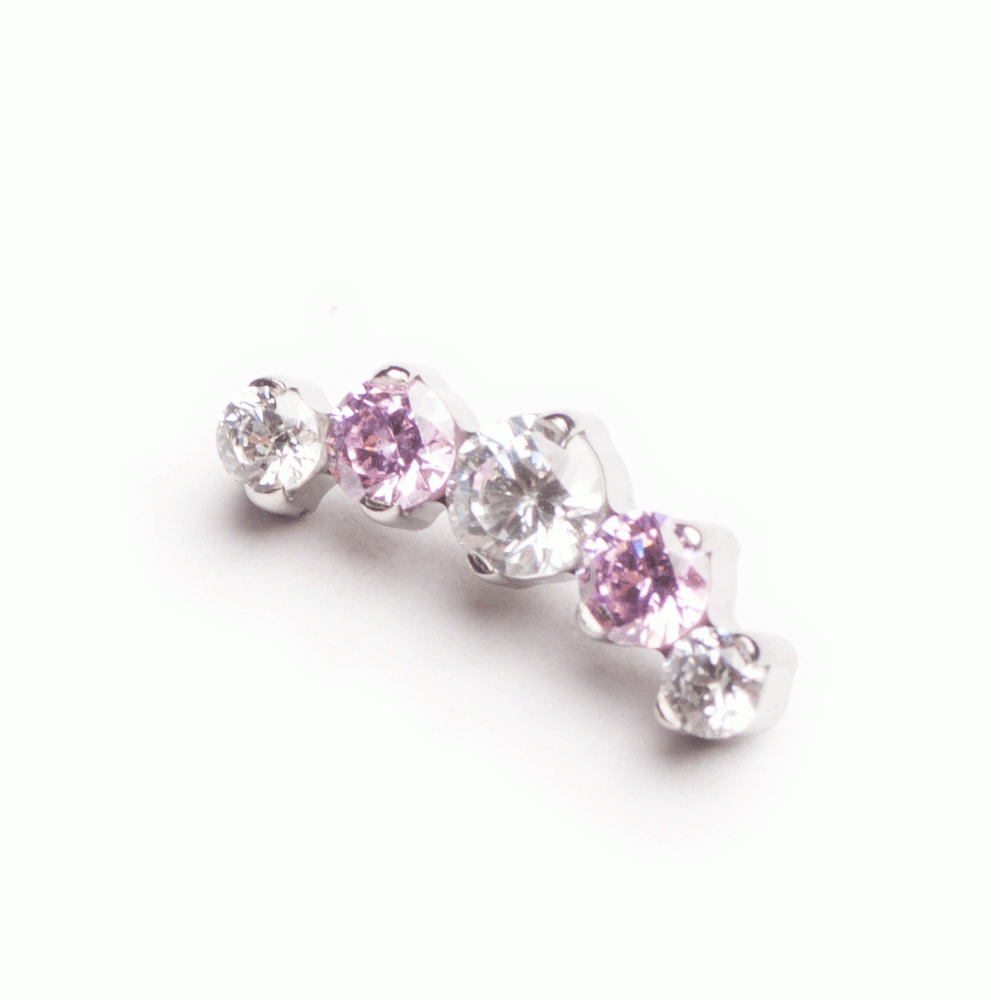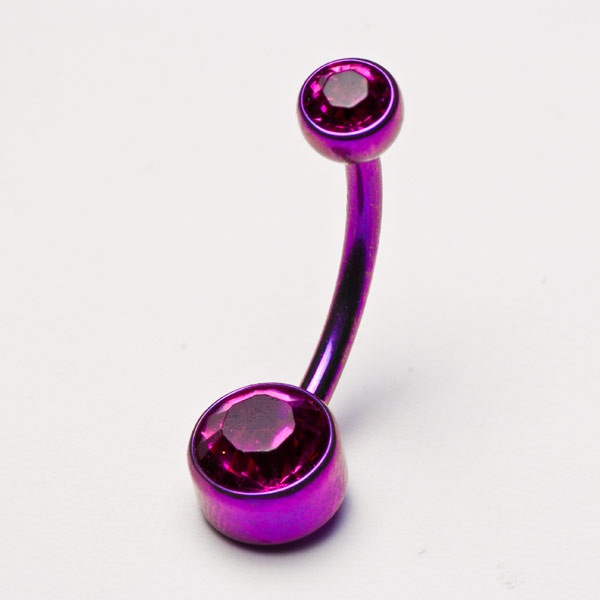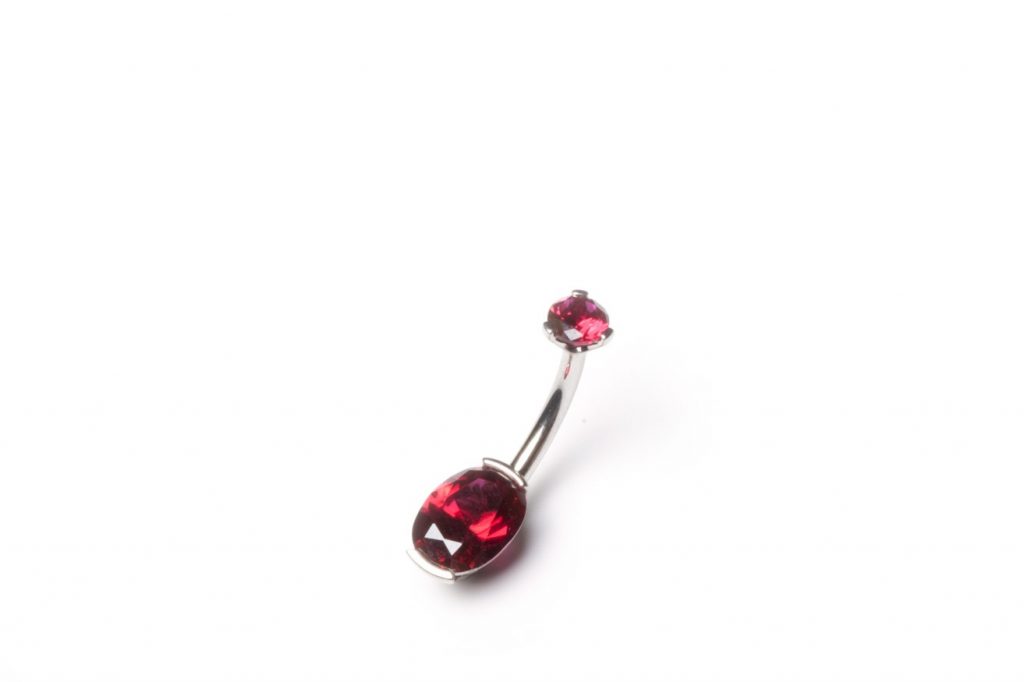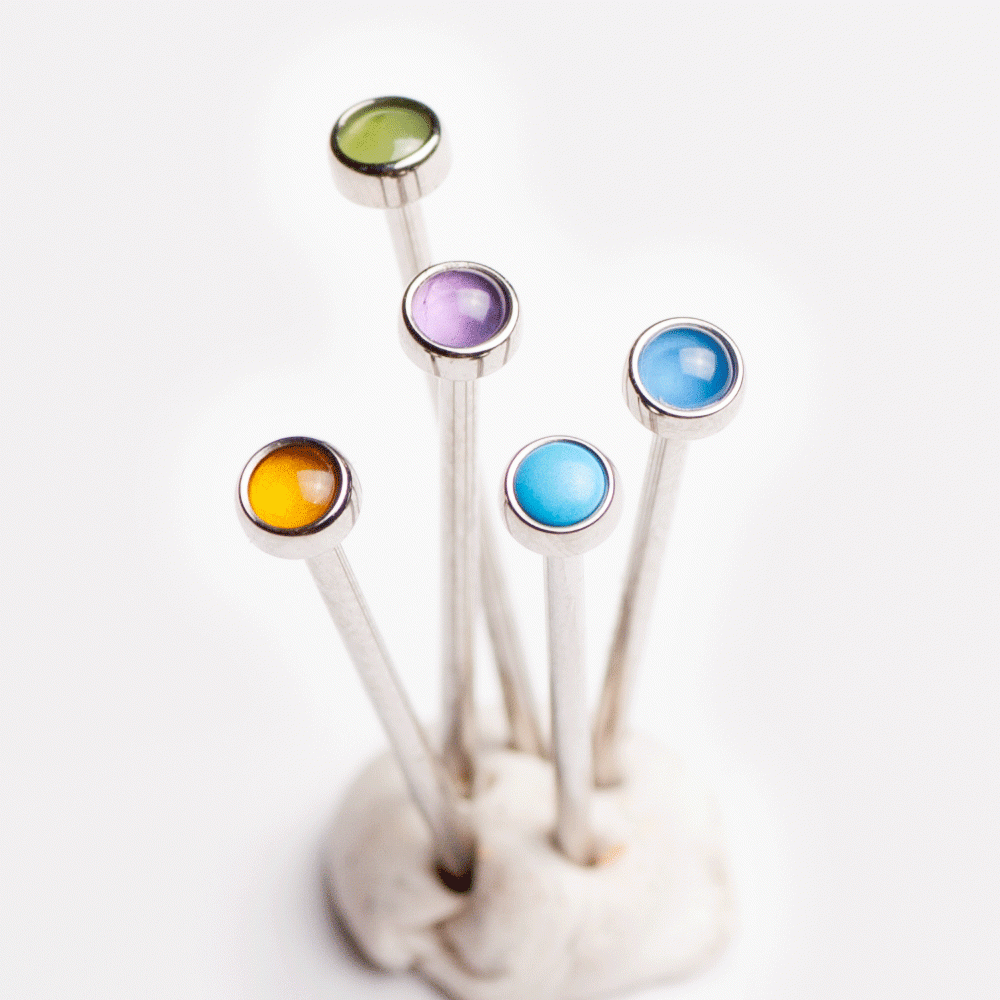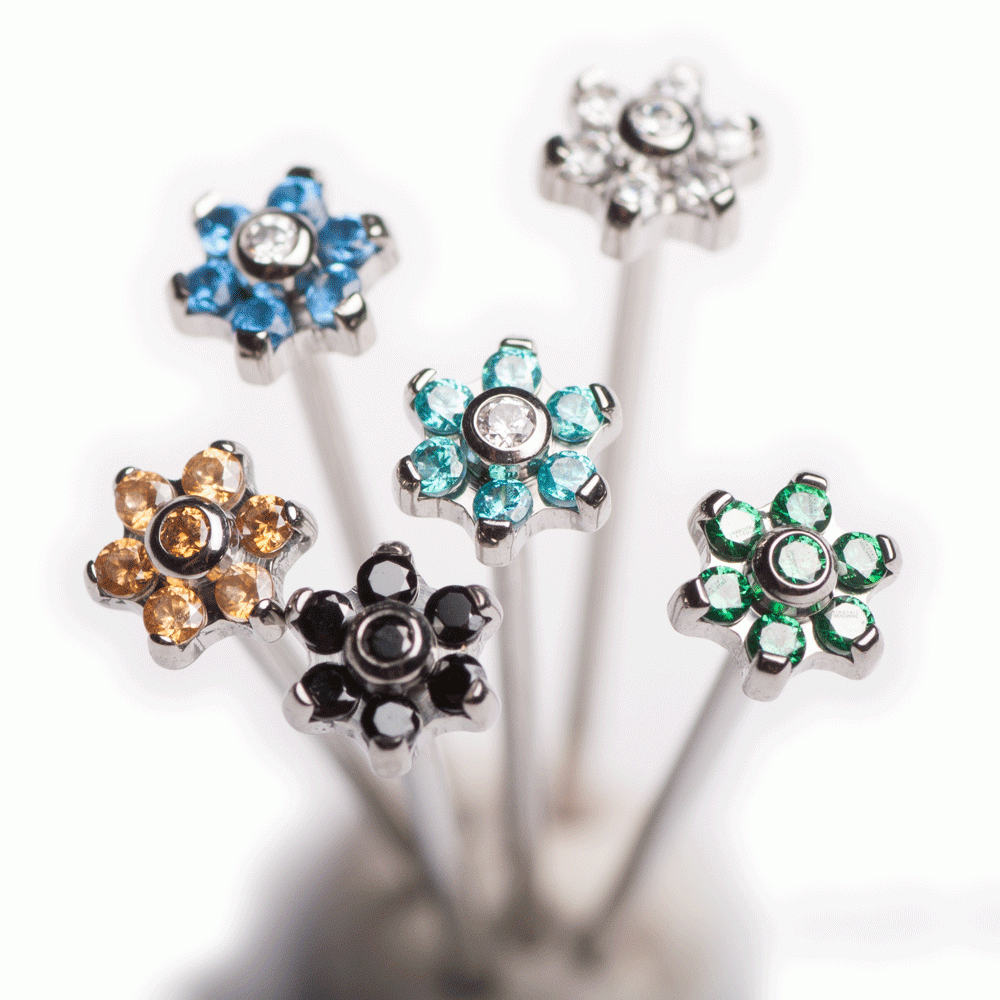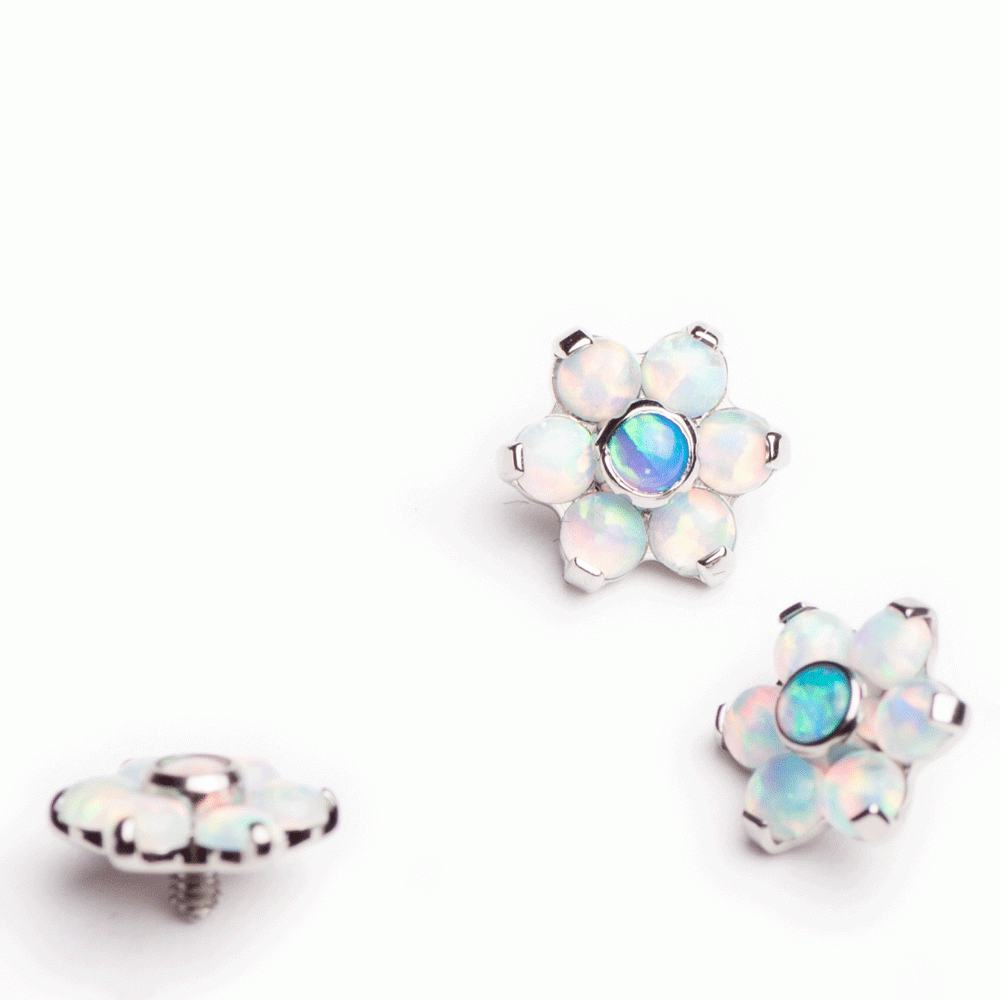Your Body Knows the Difference
You can find plenty of cheap jewelry, and some of it may be fashionable and attractive; but once you know the difference, is that REALLY what you want for your body? And remember, the bitterness of poor quality remains long after the sweetness of low price is forgotten….
Metals
First and foremost is that metal body jewelry (most especially any used for an initial piercing) must be manufactured from inert, bio-compatible materials. These include implant grade surgical stainless steel, implant grade titanium, solid 14 or 18 karat nickel-free white or yellow gold, niobium, and platinum. Other metals are not meant for wear in the body (including sterling silver and any gold plating) and can result in a variety of adverse reactions including allergies, infections, and rejected piercings.
Any retailer providing you with steel or titanium body jewelry should have access to “Mill Certificates” or “Mill Certs” from the manufacturer of the product. These detail the particular grade of the metal. If a body jewelry supplier is not familiar with this, then they are not keeping up with important information that is available in the piercing field. We have requested and received Mill Certs from our suppliers, so we are ASSURED that our jewelry is made from the proper grade of metal.
Much steel body jewelry is touted as “implant grade” but it is not unless it is ASTM F-138 compliant. (Often described as 316L or 316LVM, but this alone does not assure implant grade!) Metal MUST be F-138 grade to ensure it is implant grade. Titanium should specifically be: Ti 6A4V F-136 grade. These are the specific materials that we stock for piercings.
Ti 6A4V F-136 is also the same metal used in medical applications such as hip or knee replacements and bone pins. Other retailers frequently claim that their cheaper jewelry is “implant grade” but this is often not the case. If you are going to shop elsewhere, ask if your supplier knows the grade of the metal and if he or she has copies of the Mill Certs. Even if your eye can’t tell the difference between good metal and bad, your body may find out the hard way if you gamble on cheap jewelry.
Finish
Also vital is that the jewelry have a mirror finish; a high shine and super-smooth surface. Body jewelry that has ANY nicks, burrs, tooling marks or scratches can cause severe complications with healing. A poor finish can result in trauma to the wound, delayed healing, and a build up of scar tissue. A rough or porous surface can introduce bacteria into the wound and cause infection. Cheap body jewelry seldom has the same quality finish as well-made, more costly body jewelry. Even on a healed piercing, jewelry with a rough finish can cause irritation, damage and complications.
Much of poor quality body jewelry is not annealed. This is a heat treatment that makes jewelry pliable enough to work with easily, and it restores the metal to it’s pre bending (in the case of a ring) molecular structure. If you cannot relatively easily bend a ring (up to 14 gauge or so) with your fingers, then it is not annealed. It is also significantly harder to take such jewelry in and out, and to insert and remove beads from captive rings. This can necessitate the use of tools, which could scratch and damage jewelry and unnecessarily complicate jewelry insertion and removal.
Threading
Numerous popular styles of body jewelry have threaded ends that screw onto a post (i.e. a barbell). All of our high quality straight, bent and circular barbells are threaded internally so that the post is smooth and the threading is on the ball (or spike, gem, etc.) This allows for safe, easy and comfortable passage of metal through your body when you take the jewelry in and out since you are not passing threads through your piercing.
Externally threaded jewelry (which we do not use for piercings) has the threads on the post, and they must be passed through the piercing to insert and remove the jewelry. You don’t have to be an expert to realize that internally threaded jewelry is preferable. It is much more sophisticated and expensive to manufacture internally tapped jewelry, therefore the end product does cost more. But again, it is well worth the extra expense to avoid having to pass threads through your body. Also, due to longer threading and a greater thread count, internally threaded balls hold more securely.
